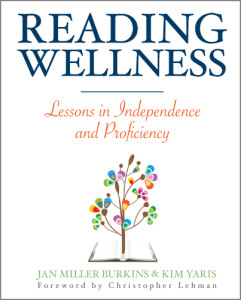How do we motivate students to embrace hard work? This question pops up frequently in conversations among teachers. With the recent push to raise rigor in reading, teachers are wondering how to encourage students to persevere through complex text.
Today we'll take a look at Chapter 2, "Posture", from Reading Wellness to find some possible answers.
 |
| Reading Wellness by Jan Miller Burkins and Kim Yaris |
Developing Posture
Posture is the way in which students demonstrate a sense of empowerment about a task, according to Burkins and Yaris.
How students do their work depends largely on how they feel about doing the work.
Many times, students believe that they can't do something, and therefore they are unwilling to try. However, we can teach students to think differently about their work.
Chapter 2 provides lessons to develop posture.
Leaning In/Leaning Out Lessons
Leaning In and Leaning Out is the metaphor used in this chapter to teach students that even when a task seems difficult, they can still tackle it. Students can Lean In, or embrace a task rather than Lean Out, or resist it.
We can teach students that they have power over their learning. We can teach them that their words, thoughts, and feelings impact their learning.
We can use picture books to model and teach the Leaning In/ Leaning Out language. Students can examine how characters lean into or away from a learning experience.
We can model Leaning In through our own words and actions in the classroom.
Reading Wellness Intentions
Here's a look at the connection between Posture and the four Reading Wellness Intentions.
The book is available for purchase or to read online for free through
Stenhouse.
How do you encourage students to embrace difficult tasks? We would love hear your thoughts. Leave a comment below!



















